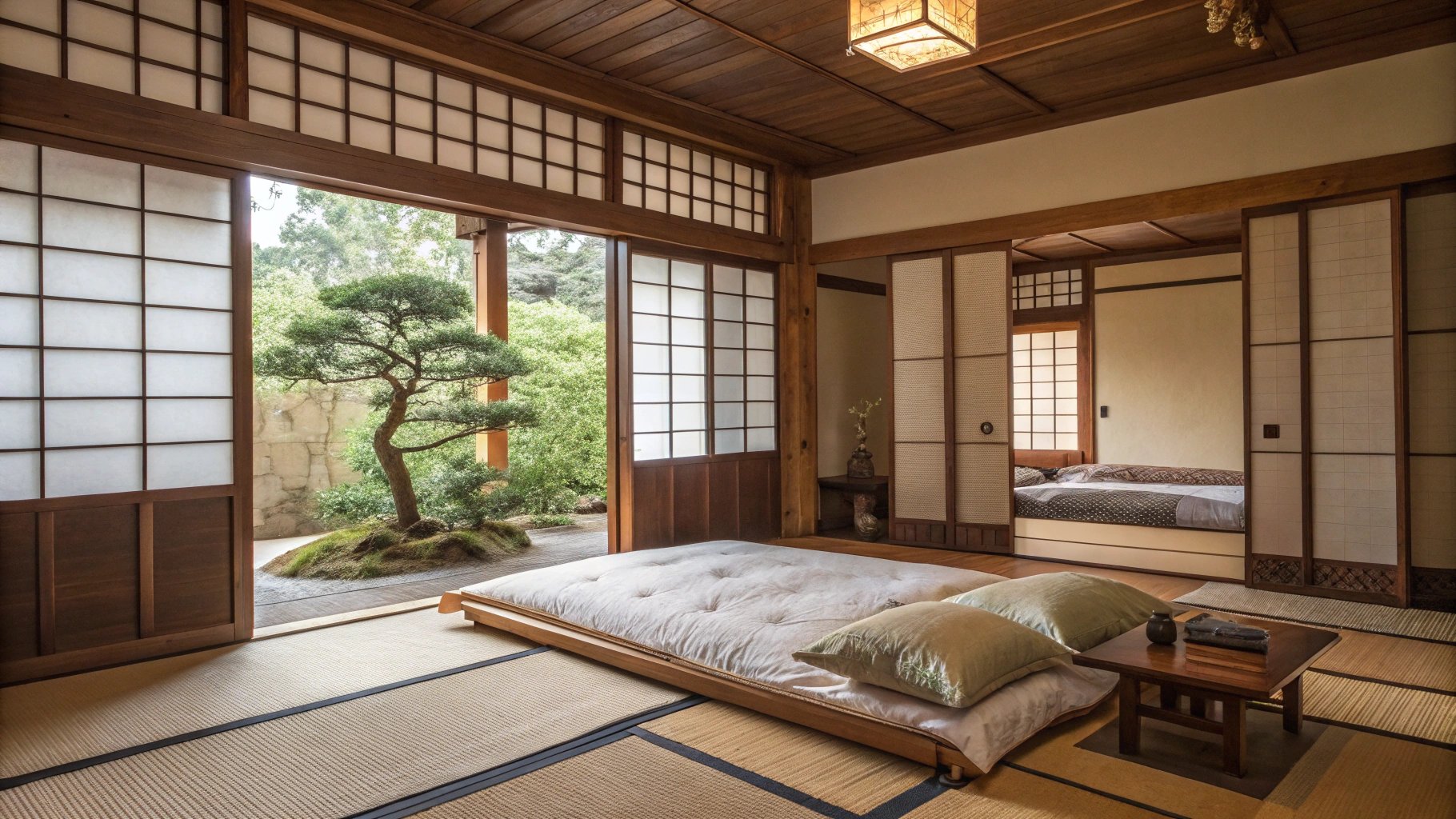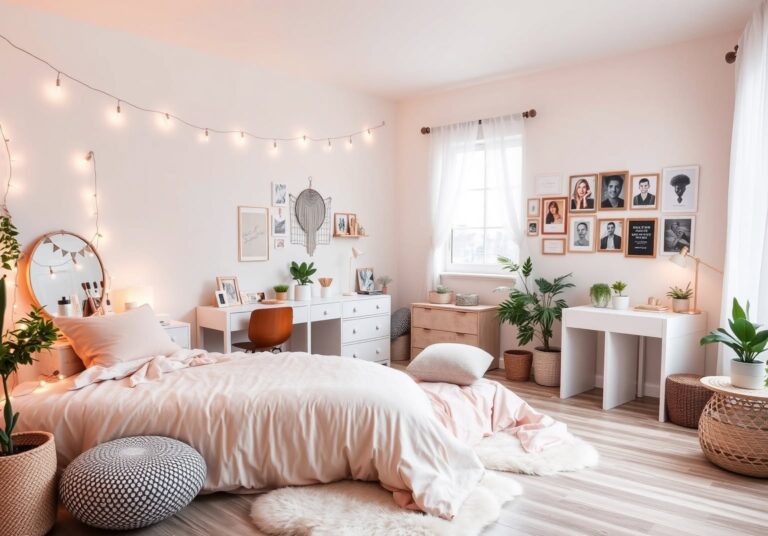Japanese Bedroom: Essential Design Tips for Modern Zen Interior
Imagine stepping into a space where every detail whispers tranquility—a Japanese bedroom. Whether you’re a fan of minimalist design or just crave a Zen retreat, the Japanese bedroom aesthetic is all about harmony, simplicity, and nature.
From tatami mats to shoji screens, these spaces are designed to calm the mind and soothe the soul. But how do you create this serene vibe in your own home?
Don’t worry; we’ve got you covered. In this guide, we’ll explore everything from traditional Japanese bedrooms to modern twists on the style. You’ll learn how to blend functionality with beauty, incorporate natural elements, and even sneak in a few DIY tricks. So, grab a cup of matcha, and let’s dive into the world of Japanese bedroom design!
1. The Essence of a Traditional Japanese Bedroom
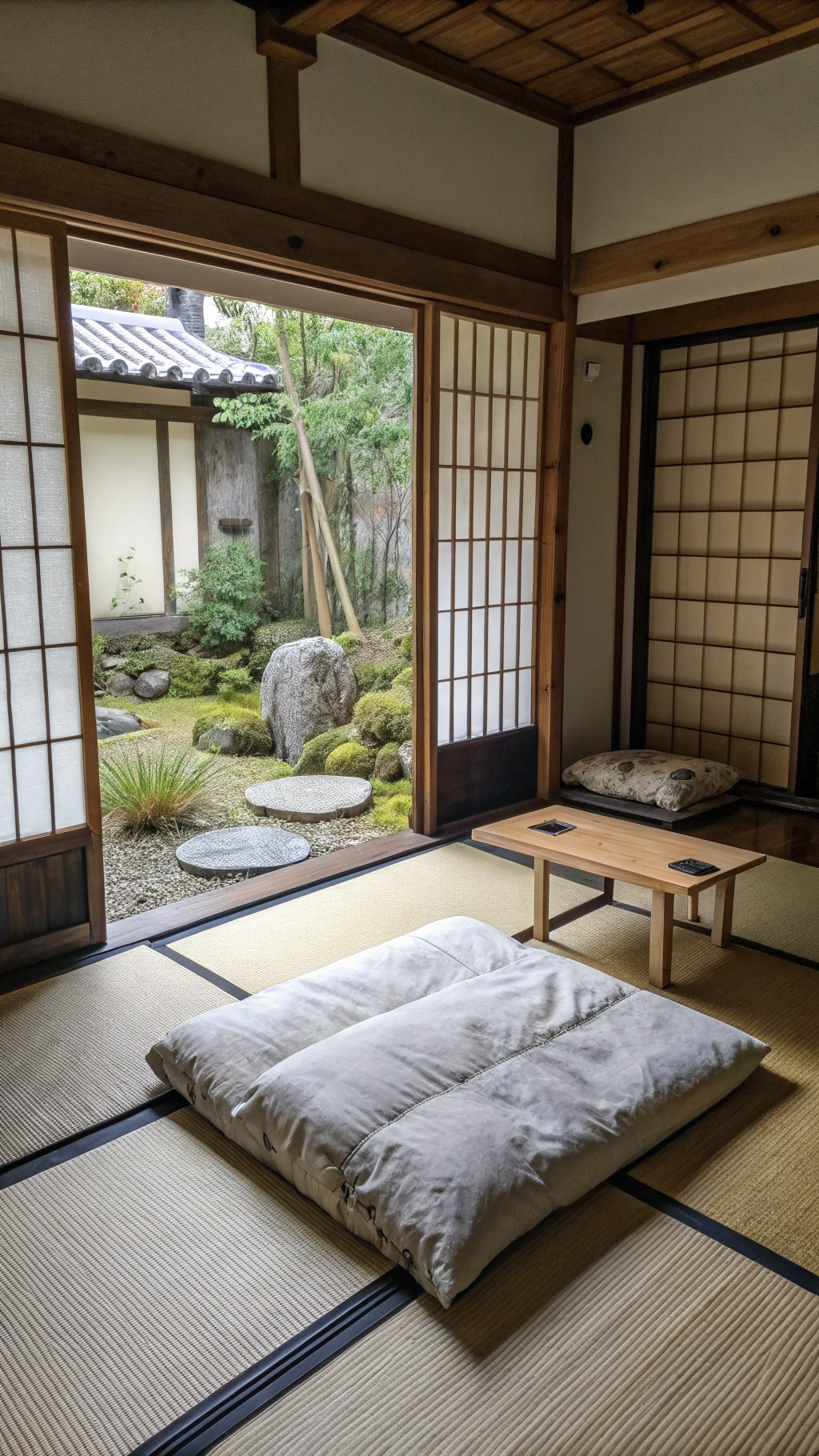
A traditional Japanese bedroom is a masterclass in simplicity. Think tatami mats covering the floor, sliding shoji screens instead of bulky doors, and a futon that magically disappears during the day. These elements aren’t just about looks—they’re deeply rooted in Japanese culture and practicality. Tatami mats, for example, are made from rush grass and provide natural insulation, keeping the room cool in summer and warm in winter. The futon, rolled out at night and stored away by day, maximizes space, making the room multifunctional. It’s like a Transformer, but for your bedroom!
Another hallmark of traditional Japanese bedrooms is the absence of clutter. The design philosophy of ‘ma’ (negative space) ensures that every item has purpose and place. You won’t find overflowing dressers or piles of laundry here. Instead, storage is discreet, often built into the walls or under the floor. This minimalist approach isn’t just aesthetically pleasing; it’s a lifestyle choice that promotes mindfulness and reduces stress. So, if you’re tired of tripping over shoes or battling a mountain of pillows, a traditional Japanese bedroom might be your salvation.
2. Modern Japanese Bedroom Design: Blending Old and New
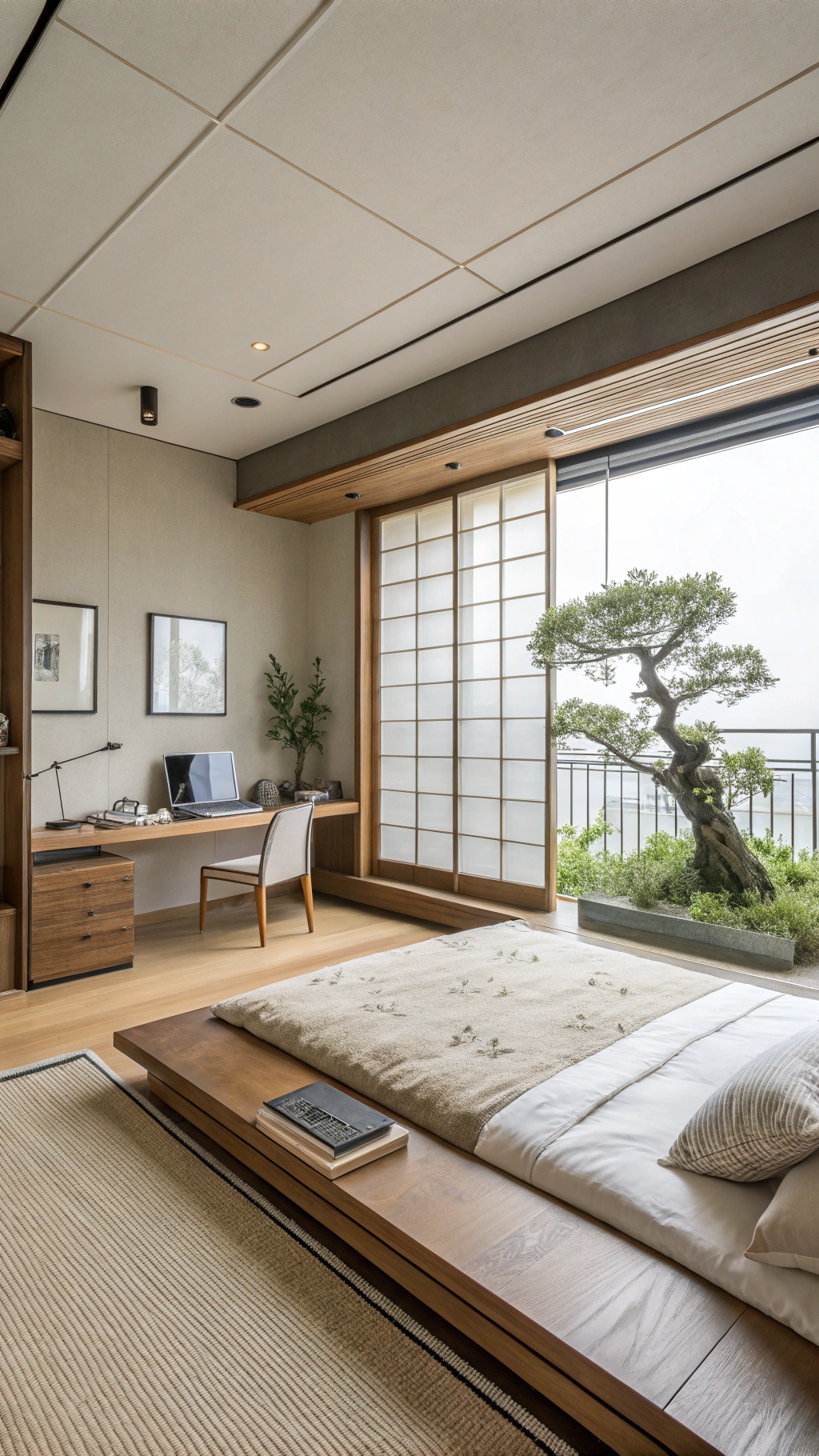
Love the Japanese bedroom aesthetic but don’t want to sleep on the floor? Modern Japanese bedroom design offers the perfect compromise. Imagine a platform bed with clean lines, paired with a tatami-inspired rug or a minimalist headboard. The key is to balance traditional elements with contemporary comfort. For example, you might swap shoji screens for frosted glass doors or use neutral, earthy tones with pops of indigo—a nod to traditional Japanese textiles.
Technology also plays a role in modern Japanese bedrooms. Think hidden charging stations, smart lighting that mimics natural daylight, and even heated floors for those chilly mornings. The goal is to maintain the Zen vibe while embracing modern conveniences. One clever trick? Use a kotatsu (a low, heated table) as a nightstand. It’s cozy in winter and doubles as extra seating. Whether you’re in a tiny apartment or a spacious home, modern Japanese bedroom ideas can adapt to any space, proving that less really is more.
3. Japanese Decor Bedroom: Small Touches, Big Impact
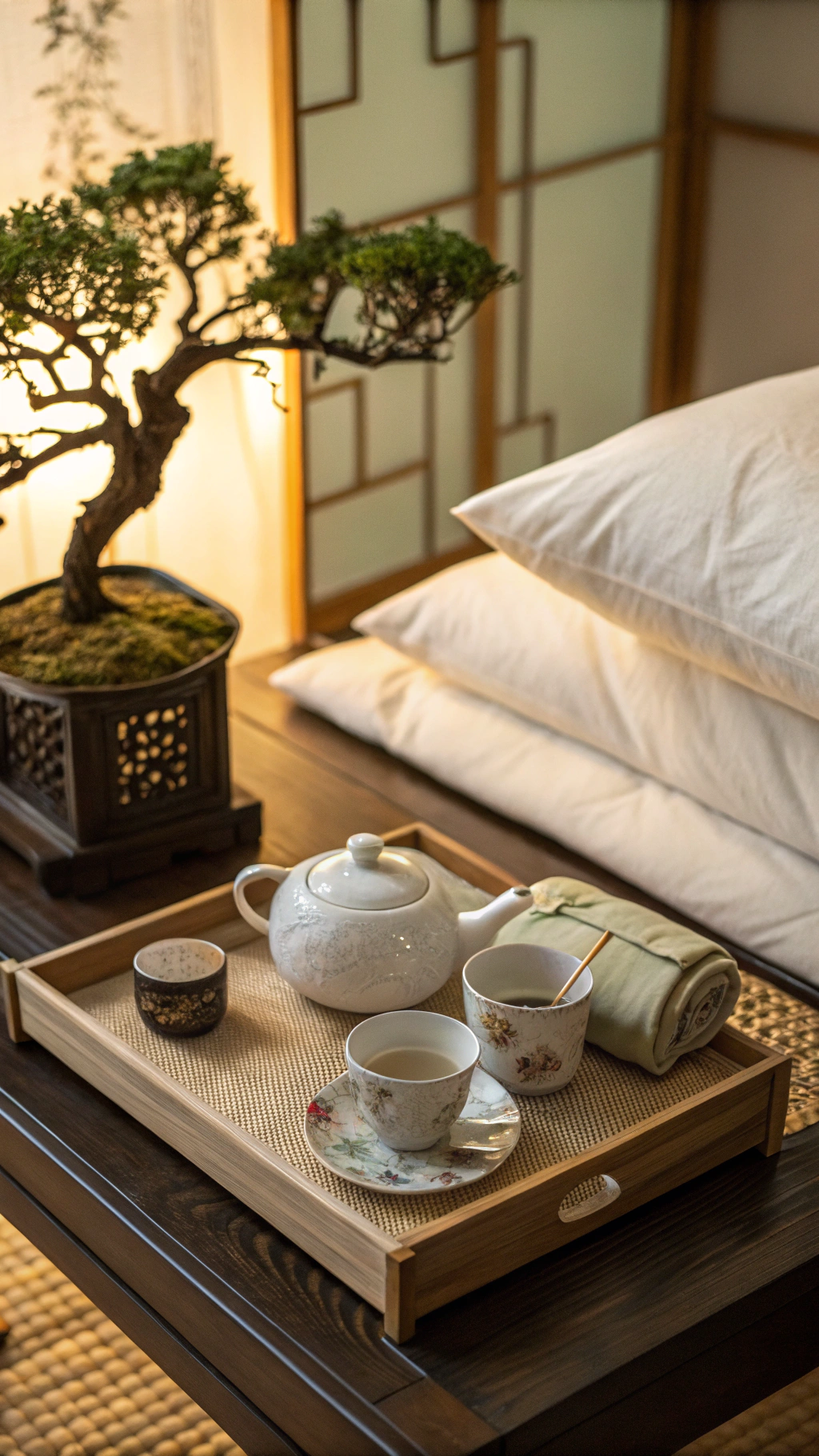
You don’t need a full renovation to capture the Japanese bedroom aesthetic. Sometimes, it’s the little things that make the biggest difference. Start with textiles: a crisp white duvet with subtle indigo patterns or a chabudai (low table) for your morning tea. Add a few origami-inspired paper lanterns or a scroll painting (kakejiku) for an authentic touch. Even something as simple as swapping your curtains for bamboo blinds can transform the vibe.
Plants are another easy win. A small bamboo plant or a peace lily brings nature indoors, a core principle of Japanese interior design Zen. If you’re feeling crafty, try making your own kokedama (moss ball) or arrange a few stones in a shallow dish for a mini Zen garden. The idea is to create a sense of serenity without overwhelming the space. Remember, in Japanese decor bedroom style, every item should have a story or purpose—no random knickknacks allowed!
4. Zen Interiors: Creating a Calm and Clutter-Free Space
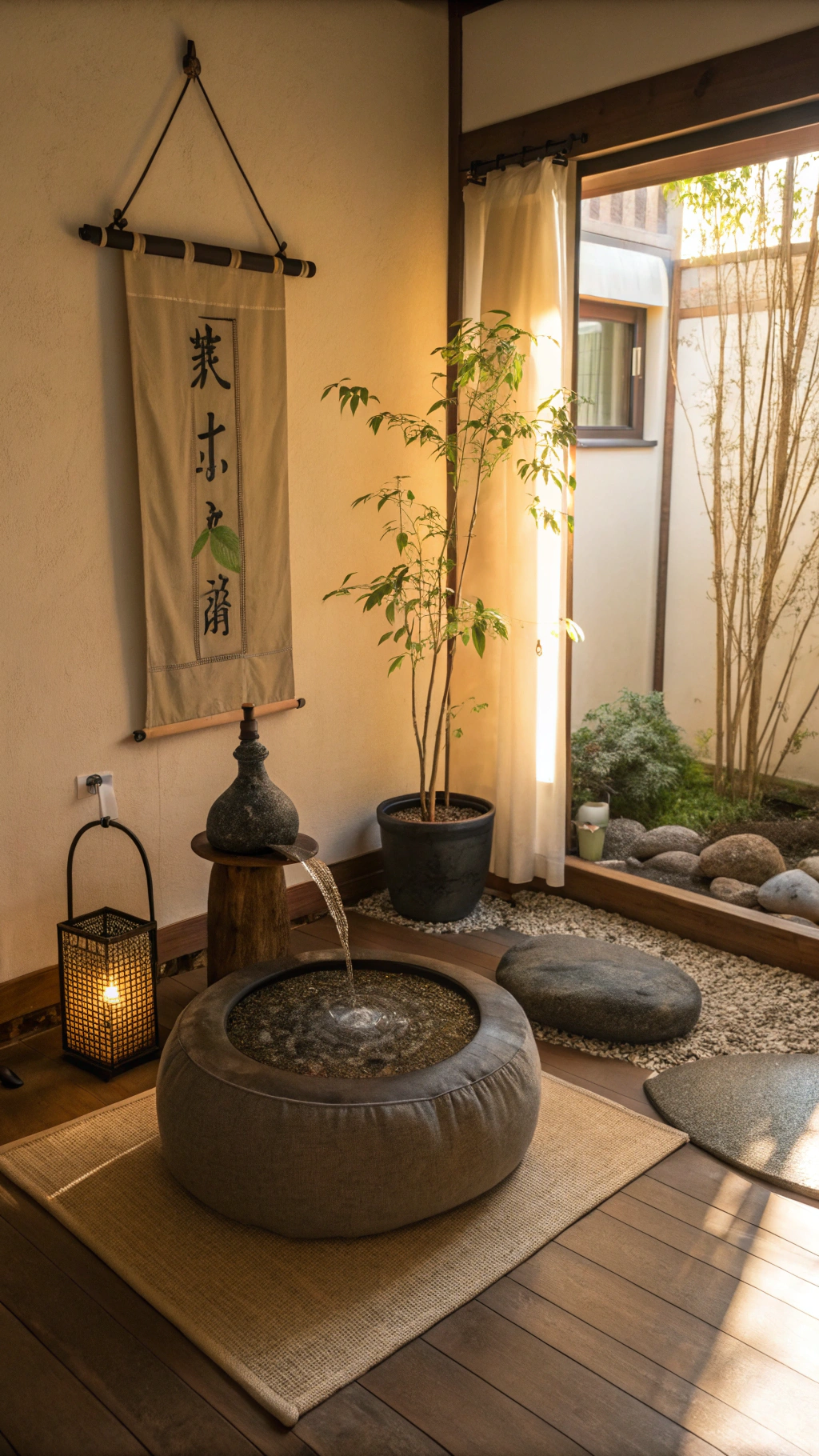
Zen interiors are all about simplicity and mindfulness, and your bedroom is the perfect place to start. Begin by decluttering—yes, that means finally tackling that ‘miscellaneous’ drawer. Use woven baskets or wooden boxes to store items out of sight. The goal is to create a space where your mind can unwind, free from visual noise. If Marie Kondo and a Buddhist monk had a design baby, this would be it.
Lighting is another crucial element. Harsh overhead lights are a no-go; opt for soft, diffused lighting instead. Paper lanterns or a floor lamp with a rice paper shade can work wonders. If you’re feeling fancy, install dimmable LEDs to mimic the changing light of dawn and dusk. And don’t forget scent! A light incense or a diffuser with yuzu or hinoki oil can elevate the ambiance. The result? A Japanese bedroom that’s not just beautiful but also a sanctuary for your senses.
5. Japanese Bedroom Ideas for Small Spaces
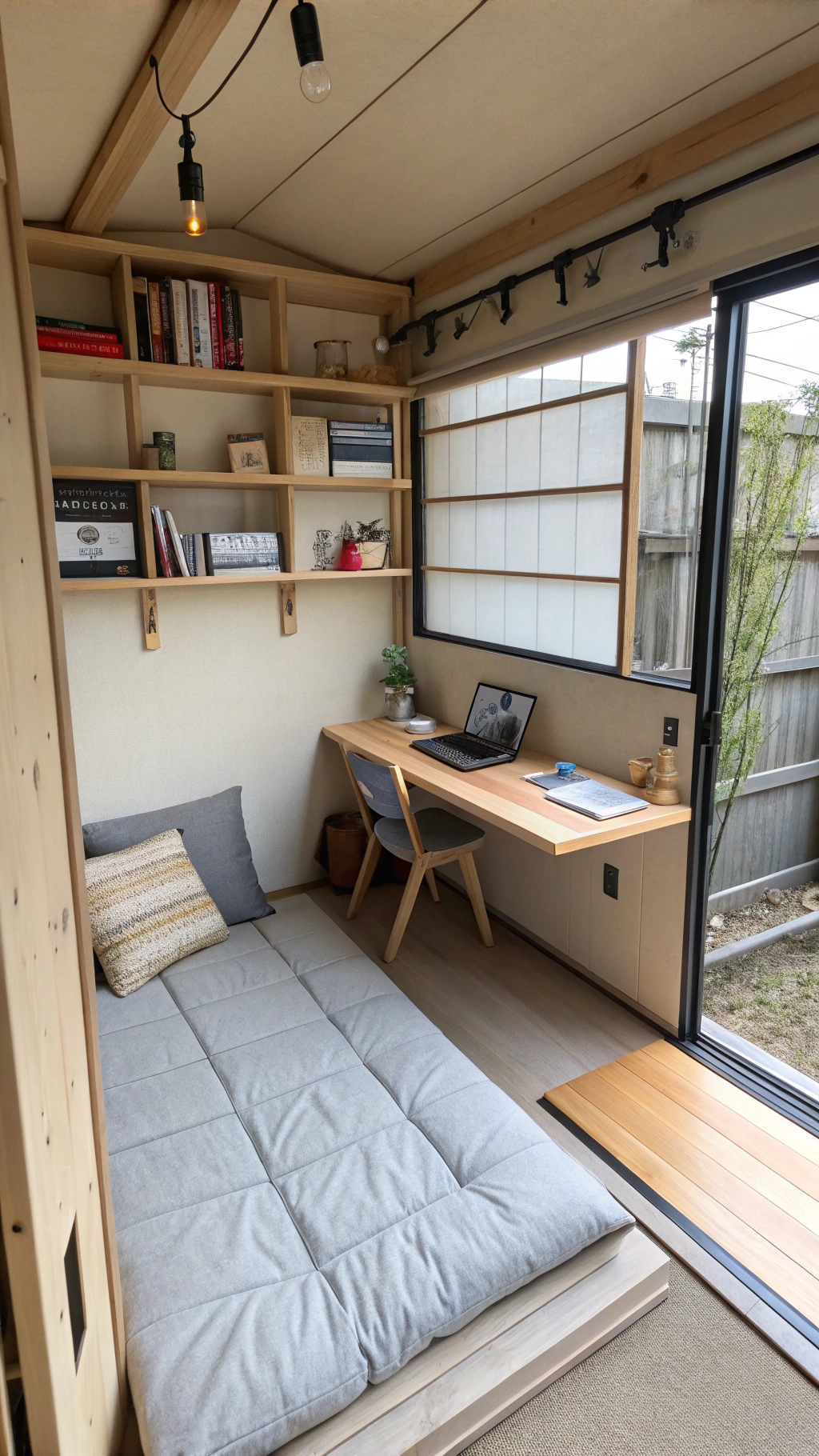
Living in a shoebox apartment? No problem! Japanese bedrooms are masters of space efficiency. Start with a platform bed that doubles as storage—think drawers underneath or a lift-up mattress. Replace bulky nightstands with wall-mounted shelves or a narrow tansu chest. Even your closet can get a makeover: use folding dividers (like shoji-inspired panels) to create a dressing area without eating up square footage.
Mirrors are another smart trick. A large mirror not only makes the room feel bigger but also reflects light, brightening the space. If you’re really tight on space, consider a Murphy bed or a futon that folds into a sofa. The key is to keep the floor as clear as possible, creating the illusion of openness. With these Japanese bedroom ideas, even the tiniest room can feel like a serene retreat.
6. The Role of Nature in Japanese Bedroom Aesthetic
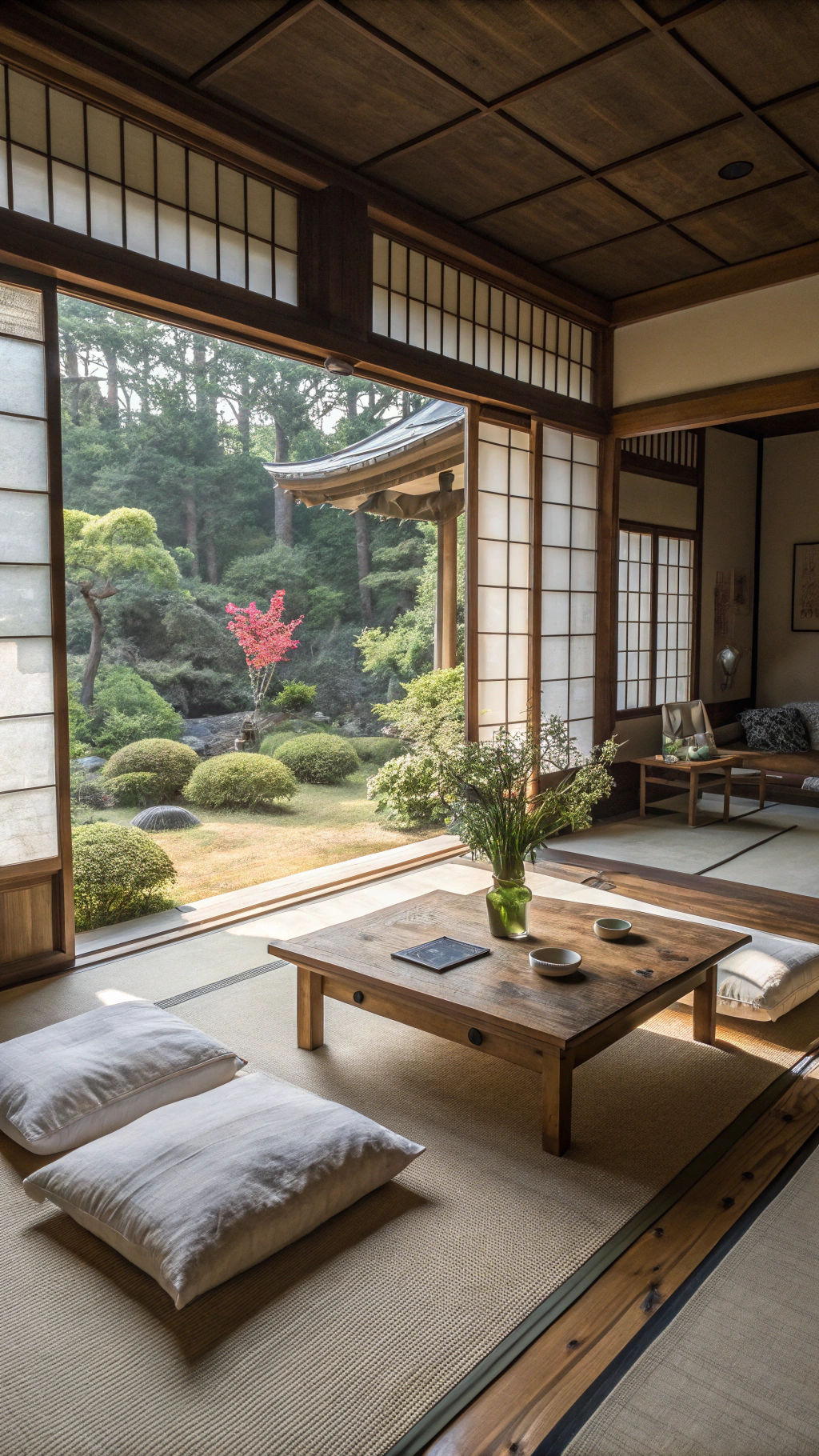
Nature isn’t just a theme in Japanese bedrooms—it’s a way of life. From the materials used (wood, bamboo, paper) to the colors (earthy neutrals, soft greens), every detail connects you to the outdoors. If you’re lucky enough to have a window with a view, frame it like a living painting. No view? No worries. A small indoor fountain or a wall mural of a misty forest can create the same effect.
Seasonal changes are also celebrated. Swap out heavier bedding for lighter linens in summer, or add a few sprigs of cherry blossom branches in spring. Even the direction of your bed matters in Feng Shui (a cousin of Japanese design principles). Position it so you can see the door but aren’t directly in line with it—this creates a sense of security and balance. By bringing nature inside, your Japanese bedroom becomes a living, breathing space.
7. DIY Japanese Bedroom Design on a Budget
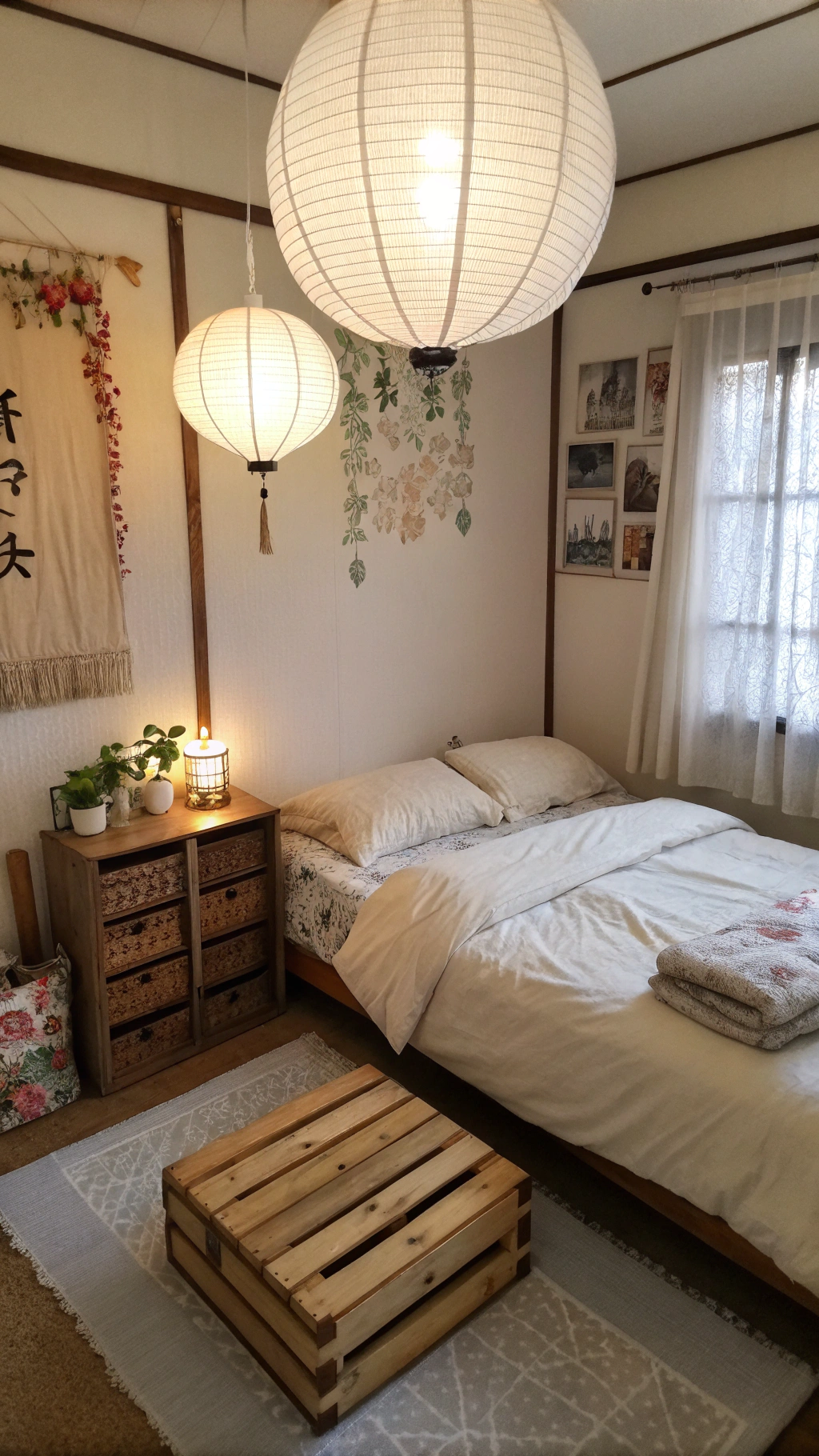
Think you need a fortune to achieve the Japanese bedroom aesthetic? Think again! Start by thrifting: look for low wooden tables, second-hand shoji screens, or even a simple futon. A coat of paint can transform an old dresser into a sleek, minimalist piece. For flooring, try interlocking tatami mats or a jute rug for a similar vibe. The internet is your friend—search for DIY shoji screen tutorials or how to make your own kakejiku.
Another budget-friendly tip: repurpose what you have. That plain white sheet? Fold it like a futon cover. Those mason jars? Turn them into lanterns with rice paper and LED tea lights. Even rearranging your furniture to create a more open flow can make a huge difference. The beauty of Japanese bedroom design is that it’s not about perfection—it’s about intention. With a little creativity, you can craft a Zen oasis without breaking the bank.
8. Why Japanese Bedrooms Are the Ultimate Sleep Sanctuaries
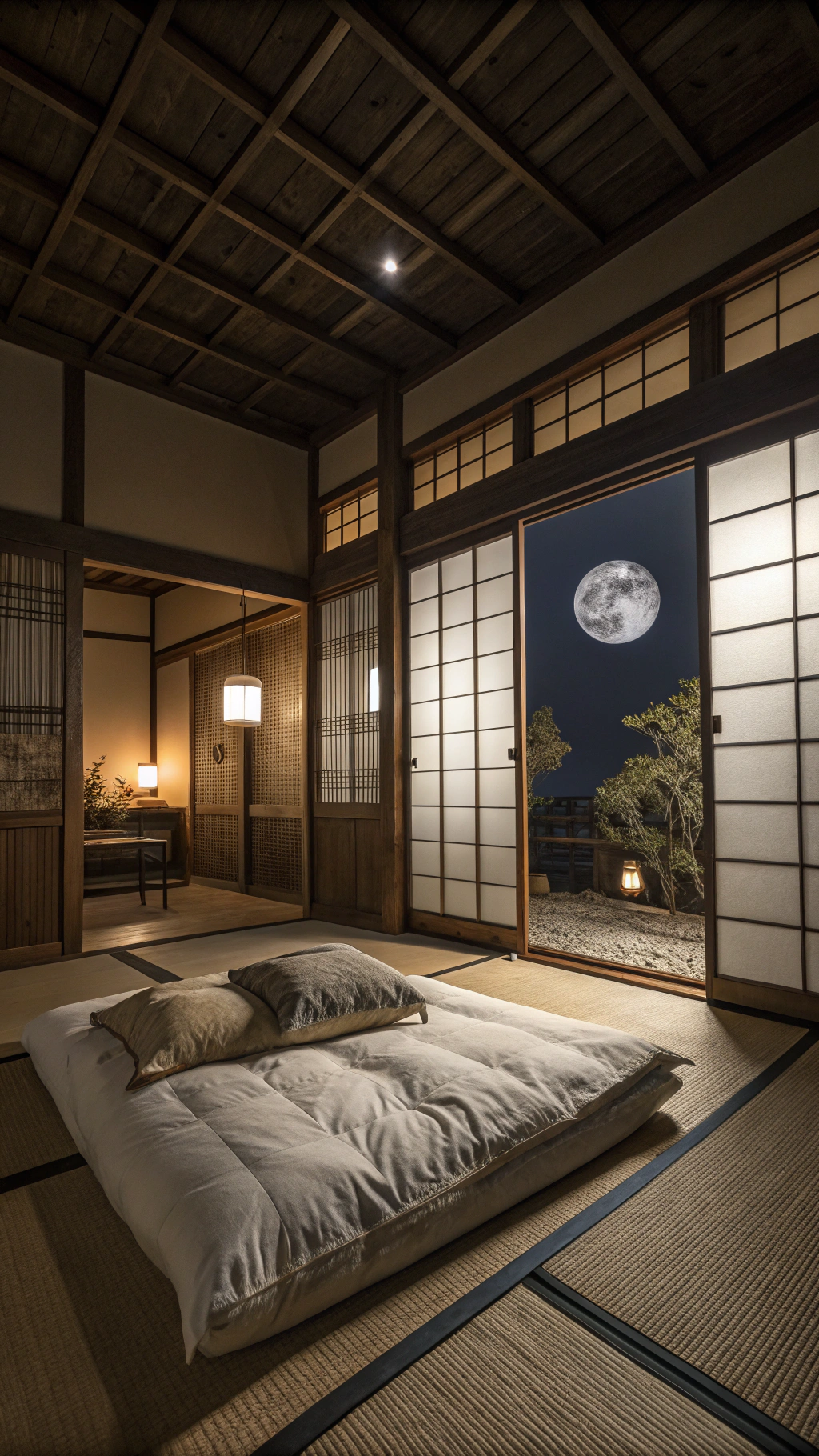
Let’s face it: most of us don’t get enough sleep. But a Japanese bedroom might just be the remedy. The combination of natural materials, muted colors, and clutter-free spaces creates an environment tailored for rest. Even the futon—though firm by Western standards—promotes better spinal alignment. And because everything has its place, your mind isn’t racing with to-do lists the second you hit the pillow.
There’s also a psychological benefit to the simplicity. A Japanese bedroom aesthetic eliminates distractions, allowing you to fully unwind. It’s like a daily reset button for your brain. Whether you’re meditating, reading, or just catching up on sleep, this space becomes your personal retreat. So, if you’re craving better sleep and a calmer mind, it might be time to embrace the Japanese way of living—one tatami mat at a time.
Conclusion
Creating a Japanese bedroom isn’t just about design—it’s about embracing a lifestyle of simplicity, mindfulness, and connection to nature. Whether you go full traditional with tatami mats and shoji screens or opt for a modern twist with a platform bed and smart lighting, the result is a space that feels like a sanctuary. From DIY hacks to small-space solutions, there’s a Japanese bedroom idea for everyone. So, why not take the plunge? Your future well-rested, Zen-loving self will thank you. Sweet dreams (or should we say, ‘yoi yume’!)!
